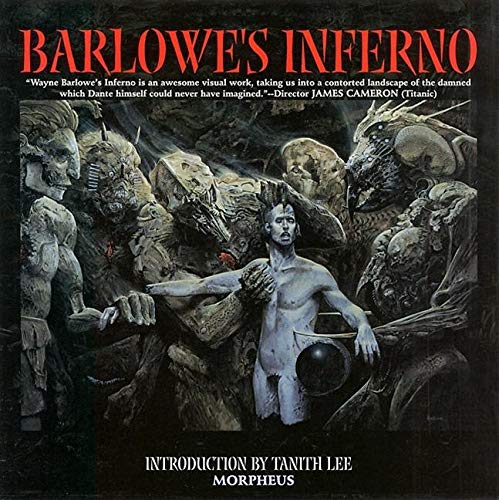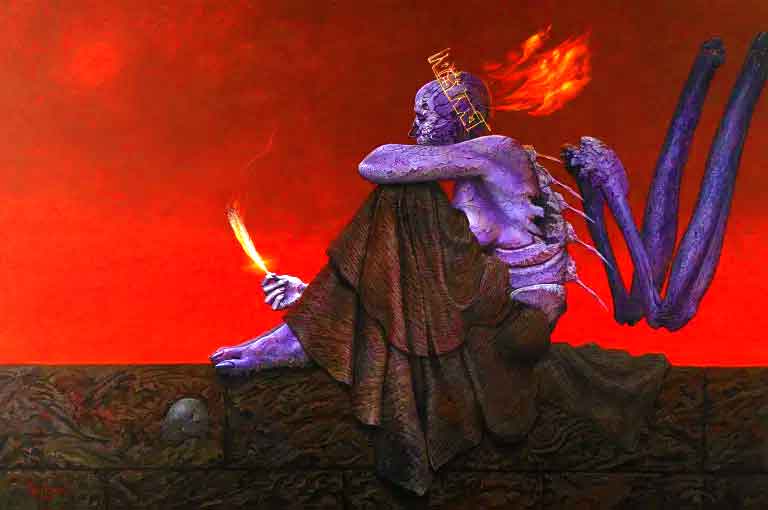 By WAYNE BARLOWE (Morpheus International; 1998)
By WAYNE BARLOWE (Morpheus International; 1998)
A vision of Hell that in originality, ingenuity and inspiration rivals the classics. This particular inferno is the work of Wayne Barlowe, who’s created many unforgettable art and prose books but with this one, an oversized hardcover, undoubtedly hit some kind of pinnacle. Also peaking was the publisher Morpheus International, an outfit best known for publishing glossy H.R. Giger monographs (such as H.R. GIGER’S NECRONOMICON); with BARLOWE’S INFERNO Morpheus surpassed its already high standards.
Barlowe took his visualization of Hell quite literally. The inferno detailed here is neither metaphoric (as in the popular-in-recent-years conceit of depicting Hell in the form of a demon-haunted Los Angeles) nor a cheeky updating of Dante (as is the case in too many modern Hellscapes to name), but a richly imagined landscape that, some borrowings from PARADISE LOST aside, is largely unique to itself.
BARLOWE’S INFERNO further distinguishes itself in its main point of interest, which is not in the souls caught in Hell (although those souls we do see are quite strikingly depicted) nor their sins. Rather, it’s the otherworldly critters that populate the place and its overall layout that concern Barlowe, who provides several beautifully drafted, boldly colored paintings, presented more often than not in panoramic wide shots (hence the oversized format) accompanied by brief prose sketches that serve to explain what we’re seeing and, on occasion, critique the archaic thinking that went into previous conceptions of Hell (ex: “Lilith, I believe, is the victim of a Biblical character assassination”).
Among the unholy sights on display are the Wargate, “one of the greatest monuments ever erected in Hell,” embedded with miles of arteries and organs that house a massive black heart; the giant Sphinx-like Warhorse, a sculpted monument depicting some ancient creature that’s now marked by jagged, crumbling decay; “Hell’s Firstborn,” amphibious critters that originated from before Hell was colonized, and pose a threat to souls and demons alike; Molech, one of the original fallen gods, who’s now a legless, genitalia-free individual who appeases itself via the sacrifices of children; Sargatanas, a Demon Major whose existence consists of “endlessly changing from one barely comprehensible form to another”; and various tortured souls bearing black spheres that “float freely through the souls’ bodies, distorting them as they wind through bone and organ alike.”
Included is an admiring introduction by horror/fantasy novelist Tanith Lee, enthusiastic blurbs from James Cameron, Guillermo Del Toro and Clive Barker, and rough sketches for many of the paintings on display. It all adds up to an absolute must-own volume for lovers of macabre art, albeit one that’s now long out of print. Let’s hope that situation changes, and soon.

